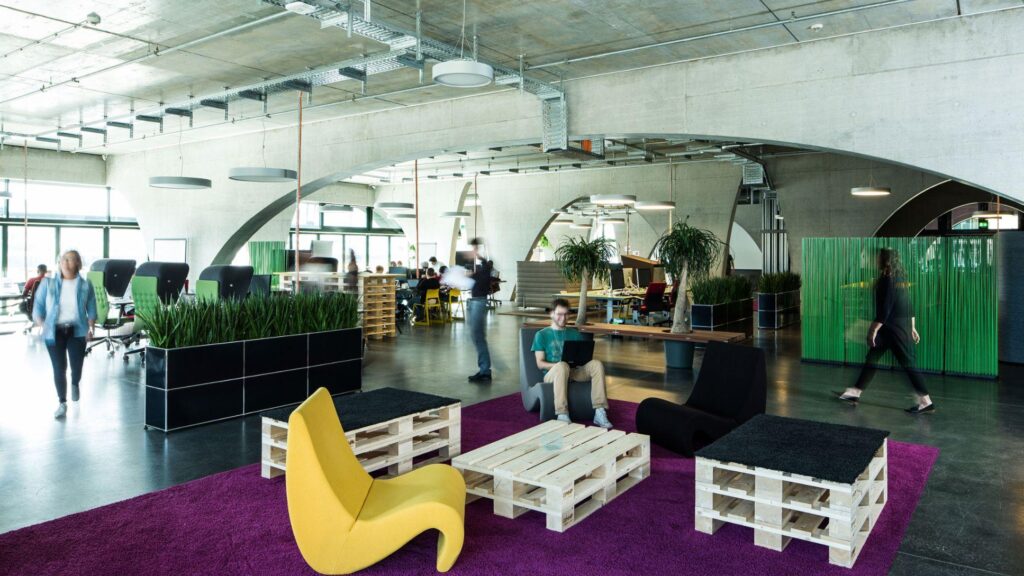Revolutionizing Materials Science with Digital Laboratories
Revolutionizing Materials Science with Digital Laboratories
A significant breakthrough in materials science has emerged as a team of researchers introduces an innovative digital laboratory that leverages data and robotics. By collaborating with advanced technological networks, these scientists aim to transform the processes involved in discovering, testing, and characterizing new materials. This cutting-edge methodology not only shortens research timelines but also improves experimental accuracy, heralding a new chapter in material innovation. As various industries—from electronics to sustainable energy—become increasingly dependent on sophisticated materials, this digital lab is set to drive scientific exploration into new realms. In this article, we explore the intricacies of this advancement and its potential impact on the future of materials science.
Digital Laboratories Redefining Materials Science
The advent of digital laboratories has fundamentally altered how researchers engage in experimentation and analyze data within the field of materials science. These high-tech environments utilize state-of-the-art tools that empower scientists to conduct their research with unmatched efficiency and accuracy. Consequently, various innovative methodologies are reshaping material development through:
- Automation: Robotic systems handle repetitive tasks so that researchers can concentrate on intricate analyses.
- Data Analytics: Advanced algorithms sift through extensive datasets to reveal patterns and insights previously hidden from view.
- Collaboration: Online platforms facilitate real-time communication among interdisciplinary teams worldwide.
The shift towards a more data-centric approach in materials science has led to several key advancements. Modern digital labs now feature dynamic feedback mechanisms where real-time information influences ongoing experiments—creating a cycle of continuous enhancement. The table below outlines essential characteristics and advantages associated with these contemporary digital laboratories:
| Main Feature |
Main Benefit |
| Real-time Data Processing |
Speeds up decision-making processes while reducing time-to-market for novel materials. |
| Remote Accessibility |
Facilitates global collaboration by eliminating geographical constraints. |
<
Machine Learning Integration
|
Identifies optimal material properties more rapidly, boosting R&D capabilities.
td > tr >
tbody >
table >
Harnessing Data and Robotics for Enhanced Material Discovery
The integration of data analytics alongside robotic technology is transforming how discoveries are made within the realm of materials science by creating an environment where computational algorithms work hand-in-hand with robotic systems for accelerated material discovery. Researchers are tapping into large datasets to uncover correlations that traditional methods often overlook. This forward-thinking strategy allows for rapid screening processes which streamline development while significantly cutting costs associated with experimental procedures; thus enabling scientists to derive actionable insights at unprecedented speeds—turning raw data into valuable knowledge guiding material design applications.
A pivotal aspect of this initiative involves employing robotic automation capable of executing high-throughput experiments efficiently and accurately. By utilizing automated testing equipment along with robotic arms, researchers can conduct numerous experiments simultaneously across diverse conditions—a synergy between data analysis and robotics fostering a feedback loop that continuously refines searches for optimal materials. Below is a summary highlighting some key benefits derived from this innovative approach:
| Advantage
|
| Description
| |
|
< td >< strong >Enhanced Efficiency< strong >< / td >< td >Accelerated screening process for new materials.< / td > tr >
< td >< strong >Cost Savings< strong >< / td >< td >Reduces resource expenditure during discovery.< / td > tr >
< td >< strong >Data-Driven Insights< strong >< / dt>< dt >>Utilizes extensive datasets for informed decision-making.< / dt> tr >
Error Reduction
>Minimizes human error throughout experimental procedures.< / dt> tr >
tbody >
table >
div>
The incorporation of digital tools within academic institutions or industrial settings can significantly boost efficiency as well as foster innovation within the field of materials science.To fully leverage these advancements , organizations should consider implementing several strategies : p>
- Pursue Training Initiatives: Strong> Ensure both academic researchers & industry professionals receive comprehensive training regarding usage & functionality pertaining specifically towards available digital platforms .This could involve workshops , online courses , or hands-on mentoring opportunities . li
- < Strong> Foster Collaborative Platforms: Adopt collaborative platforms designed specifically around facilitating teamwork across different disciplines thereby promoting seamless knowledge sharing & innovation. li
< Strong> Implement Robust Data Management Systems: Establish secure yet streamlined systems dedicated solely towards managing collected information ensuring efficient storage retrieval analysis. li
- < Strong> Create Iterative Feedback Mechanisms: Develop channels allowing users provide constructive input suggestions leading continuous improvement existing tools utilized. li
ul
Furthermore cultivating an environment encouraging experimentation open communication will greatly enhance overall integration process . Consider adopting following approaches :
ul
Pilot Projects: Begin small scale pilot projects assessing feasibility newly introduced technologies gathering insights prior larger implementations.
Cross-disciplinary Collaboration: Promote interdisciplinary teamwork bringing together diverse perspectives problem-solving.
Stakeholder Engagement: Actively involve all relevant stakeholders throughout entire integration journey ensuring their needs expectations addressed effectively.
Additionally, refer below summarization outlining critical considerations necessary successful implementation:
Closing Thoughts ###
As we continue exploring uncharted territories within materials science, introducing digital laboratories powered by advanced data analytics combined seamlessly alongside robotics** holds immense promise revolutionizing entire fields! Empowering scientists enables them execute complex experiments swiftly efficiently paving pathways toward groundbreaking discoveries influencing multiple sectors ranging from aerospace renewable energy! As they harness these transformative technologies implications sustainability efficiency innovation become increasingly profound! The journey integrating such solutions remains just beginning; each advancement brings forth exciting possibilities reshaping our understanding applications surrounding various types substances used today! Moving ahead scientific community stands poised gain deeper insights foster collaborations enhancing capabilities ushered forth during current era characterized rapid technological evolution witnessed globally!
Stay tuned follow developments emerging intersection technology sciences!
|
